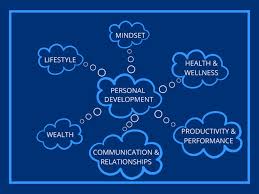The Importance of Environmental Conservation
Environmental conservation is a critical issue that affects every living being on our planet. The environment provides us with vital resources such as clean air, water, and food that are essential for our survival. However, human activities have significantly impacted the environment, leading to pollution, deforestation, loss of biodiversity, and climate change.
It is crucial for us to take action to protect and preserve our environment for future generations. By practicing sustainable living habits such as reducing waste, conserving energy, and supporting eco-friendly initiatives, we can minimize our negative impact on the environment.
One of the key aspects of environmental conservation is the protection of wildlife and ecosystems. Many species are facing extinction due to habitat destruction and pollution. By preserving natural habitats and implementing conservation efforts, we can help safeguard biodiversity and maintain a healthy balance in ecosystems.
Climate change is another pressing issue that requires immediate attention. The burning of fossil fuels has led to an increase in greenhouse gas emissions, resulting in global warming and unpredictable weather patterns. By promoting renewable energy sources and reducing carbon emissions, we can mitigate the effects of climate change and work towards a sustainable future.
Education plays a vital role in raising awareness about environmental issues and inspiring individuals to take action. By educating ourselves and others about the importance of environmental conservation, we can drive positive change at both local and global levels.
In conclusion, environmental conservation is not just a choice but a responsibility that we all share. By working together to protect our planet and its natural resources, we can create a healthier and more sustainable world for present and future generations.
Understanding Environmental Concepts: Definitions, Issues, and Examples
- What is literally meaning of environmental?
- What are the 3 main types of environmental issues?
- What is the broad definition of environment?
- What are the 3 examples of environmental?
What is literally meaning of environmental?
The term “environmental” refers to everything surrounding us, including the air we breathe, the water we drink, the land we live on, and the ecosystems that support life on Earth. It encompasses the natural world and all living organisms, as well as human-made structures and systems. When we talk about environmental issues or environmental conservation, we are referring to the protection and preservation of these elements to ensure a sustainable and healthy planet for current and future generations.
What are the 3 main types of environmental issues?
There are three main types of environmental issues that pose significant challenges to our planet’s well-being: pollution, loss of biodiversity, and climate change. Pollution, whether it be air, water, or soil pollution, threatens human health and ecosystems. Loss of biodiversity refers to the decline in the variety and abundance of species in a particular habitat, disrupting ecological balance and reducing resilience to environmental changes. Climate change, driven by human activities such as burning fossil fuels and deforestation, leads to rising global temperatures, extreme weather events, and sea-level rise, impacting both natural systems and human societies. Addressing these environmental issues requires collective action and sustainable practices to protect our environment for future generations.
What is the broad definition of environment?
The broad definition of the environment encompasses the surroundings in which an organism, individual, or community exists. It includes both natural elements such as air, water, soil, and ecosystems, as well as human-made components like buildings, infrastructure, and waste. The environment also encompasses factors such as climate, biodiversity, and resources that influence the well-being and survival of living organisms. Understanding the broad definition of the environment is crucial for recognizing the interconnectedness of all elements on Earth and the impact of human activities on our surroundings.
What are the 3 examples of environmental?
Environmental examples encompass a wide range of aspects related to the natural world and human impact on it. Three key examples of environmental issues include air pollution, deforestation, and water contamination. Air pollution, caused by emissions from vehicles, factories, and other sources, poses a threat to human health and contributes to climate change. Deforestation, the clearing of forests for agriculture, logging, or urban development, leads to habitat loss for wildlife and disrupts ecosystems. Water contamination from industrial runoff, agricultural pesticides, and improper waste disposal jeopardizes clean water sources essential for both human consumption and ecosystem health. Addressing these environmental challenges is crucial for protecting our planet’s health and sustainability.




